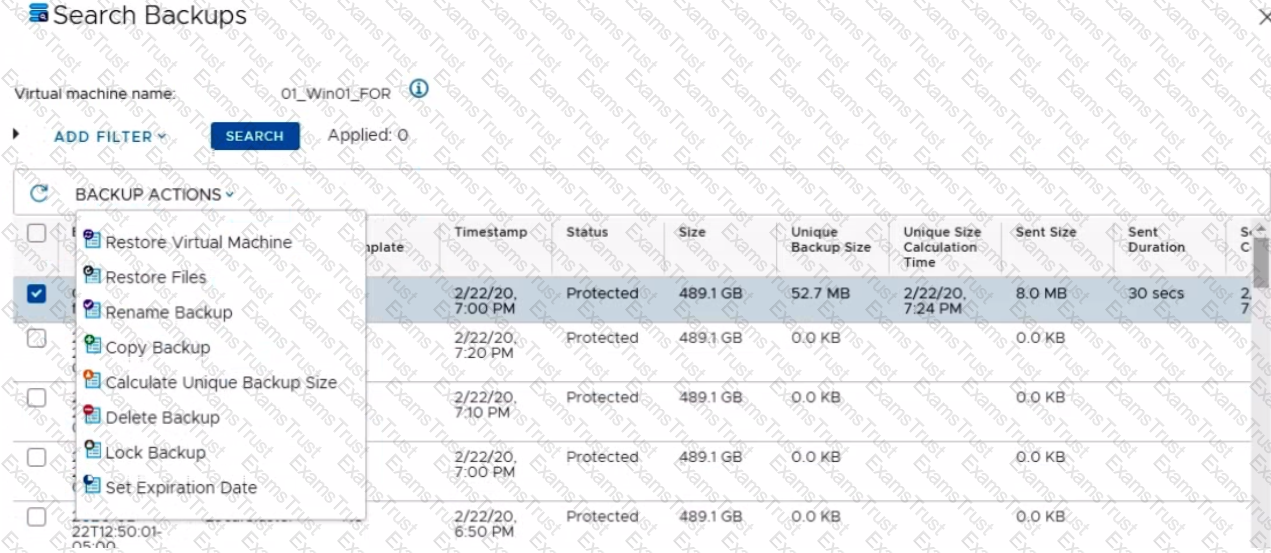A customer has some CPU intensive applications running that will be deployed in the virtual machines. The customer is concerned that these virtual machines may impact the performance of the other virtual machines.
What should you recommend to avoid this potential problem and still leverage HPE SimpliVity features for these virtual machines?
You want to use Lanamaric to collect Information from an existing customer environment to support the solution design process. The customer informed you that the existing ESXi infrastructure is not connected to the internet.
What can you do to collect the data using Lanamark?
Which criteria does HPE SimpliVity use to decide how many streams it needs to copy data to an HPE Storence target?
During the troubleshooting process, HPE Support requested a Support Capture file from multiple HPE SimpliVity hosts. The customer is concerned about security and wants to know what is included in this file.
What information is included in this file? (Select two.)
You are designing a new HPE SimpliVity solution. You want to confirm your configuration is compatible and supported with the customer requirements. Which items can you find in the HPE SimpliVity mniStack Interoperability Guide? (Select two.)
A customer deleted a folder from a virtual machine running Windows. Click the backup option that you should use to restore this folder.

A customer is analyzing data using HPE InfoSight for HPE SimpliVity. They found that the Total Data Stored for a VM is significantly higher than the VM Storage Usage in vCenter. How do you explain these findings?
What does HPE Reference Architectures for HPE Simplicity provide?
How is each datastore presented to HPE SimpliVity nodes?
What is the difference between crash consistent and application consistent cloning methods?
A customer wants to migrate virtual machines from the existing infrastructure to HPE SimpiiVlty. How can you complete this task?
Which HPE SimpliVity Data Visualization Platform layer is responsible for storage and tracking of all data and metadata?